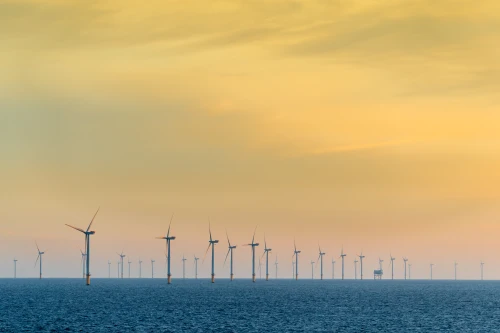
May 8th, 2025
Join our Italian Energy Day on 20 May – Book now
Demand elasticity in energy consumption measures how sensitive energy use is to price changes, shaping consumer behaviour, energy policies, and market strategies.

Demand elasticity in energy consumption refers to how much energy use changes when prices increase or decrease. It is a critical concept in energy markets as it determines how consumers adjust their energy usage based on price fluctuations. In essence, it measures how sensitive consumers are to changes in energy costs.
Understanding demand elasticity helps energy providers and policymakers forecast consumption patterns, develop pricing strategies, and implement energy efficiency measures.
In economics, demand elasticity is classified into elastic and inelastic demand.
Elastic demand: consumers are highly responsive to price changes when demand is elastic. For instance, if electricity prices rise sharply during peak hours, households may shift consumption to off-peak periods to save money.
Inelastic demand: when demand is inelastic, consumption remains relatively stable despite price fluctuations. Essential services, such as heating in winter or cooling during heatwaves, often exhibit inelastic characteristics.
The concept of supply and demand is key to understanding energy elasticity. Price elasticity of demand (PED) measures how much energy use changes when prices change. Demand is elastic if a slight price increase causes a significant drop in energy use. If prices rise and energy use barely changes, demand is inelastic. Factors like available alternatives, consumer habits, and how urgently energy is needed all affect this balance.
Alternative energy sources like renewable and alternative fuels affect demand elasticity. When consumers have access to substitutes, they are more likely to adjust their consumption in response to price changes, leading to higher elasticity.
Time of use (TOU) pricing schemes encourage consumers to shift their energy usage to off-peak times when prices are lower. This pricing strategy can significantly influence demand elasticity by incentivising consumers to modify their consumption patterns based on price signals.
Demand elasticity varies between the industrial and residential sectors. Due to their ability to invest in energy-efficient technologies, industrial consumers may have more flexibility to adjust their energy usage in response to price changes. On the other hand, residential consumers may exhibit inelastic demand for essential energy needs, such as heating and cooling.

Let’s look at some real-world examples of elastic and inelastic energy demand.
Demand response programmes: these initiatives encourage consumers to reduce or shift energy use during peak demand periods. For example, smart thermostats (many of us are now familiar with these) allow households to pre-cool their homes when electricity rates are low, reducing consumption during peak hours. Demand response helps balance the grid and provides financial incentives to participants, showcasing how elasticity can be leveraged for economic and operational benefits.
Electric vehicle charging behaviour: EV owners often delay charging until electricity prices are lower, demonstrating elastic behaviour in response to dynamic pricing. Smart apps can help owners take advantage of lower prices with scheduled charging.
Heating and cooling in extreme weather: in regions prone to severe winters or intense summers, consumers have limited flexibility to reduce heating or air conditioning, even if energy prices increase.
Essential services: during a scorching summer or a harsh winter, households and businesses prioritise maintaining comfortable indoor temperatures, often irrespective of the associated energy costs. This is particularly true for hospitals, data centres, and other critical facilities that must keep a consistent temperature (or energy consumption), regardless of price fluctuations, resulting in low elasticity demand. This inelasticity challenges energy suppliers and policymakers as they must ensure a reliable supply to meet these critical needs.
Demand elasticity is crucial for energy companies and policymakers as it influences their strategies and decisions. Energy companies utilise insights into elasticity to devise pricing structures that encourage better consumption patterns. For example, time-of-use (TOU) pricing differentiates rates based on the time of day, with higher prices during peak hours and lower rates during off-peak periods. By implementing TOU pricing, energy companies aim to incentivise consumers to shift their usage away from peak times, thus reducing strain on the grid and enhancing overall efficiency.
Policymakers, too, leverage demand elasticity to craft regulations and initiatives that promote sustainable energy consumption. Subsidies for energy-efficient appliances, tax incentives for renewable energy installations, and educational campaigns on energy conservation are all measures designed to influence consumer behaviour. By understanding the elasticity of demand, policymakers can tailor their interventions to achieve desired outcomes, such as reducing greenhouse gas emissions or minimising energy waste.
Moreover, demand elasticity is pivotal in developing energy policies to ensure energy security. During periods of supply disruption or resource scarcity, understanding the elasticity of demand enables policymakers to implement measures that mitigate the impact on consumers and maintain stability in energy markets.
Looking ahead, demand elasticity will continue to evolve as energy markets undergo significant transformations. The increasing integration of renewable energy sources, advancements in smart grid technologies, and energy storage solutions will undoubtedly influence demand patterns and elasticity.
Let’s take a brief look at two key areas.
Smart grids enable real-time data exchange between utilities and consumers, improving demand forecasting and energy distribution. By integrating Internet of Things (IoT) devices, consumers gain greater control over their energy use, promoting more elastic demand.
The growth of energy storage solutions is expected to affect demand patterns and elasticity. As smart home technologies evolve, consumers gain better visibility and control over their energy consumption. Innovations such as automated thermostats, smart appliances, and home battery storage systems empower consumers to respond proactively to energy price changes, increasing overall elasticity.
Understanding demand elasticity is crucial for navigating the dynamic interplay between price changes and consumer behaviour. By implementing dynamic pricing strategies, promoting energy efficiency, and investing in smart grid technology, policymakers and energy companies can encourage more flexible energy consumption patterns. As consumer awareness grows and innovative technologies emerge, demand elasticity will play an increasingly significant role in shaping sustainable and efficient energy markets.
Make better decisions with all the data you need to analyse European energy markets.